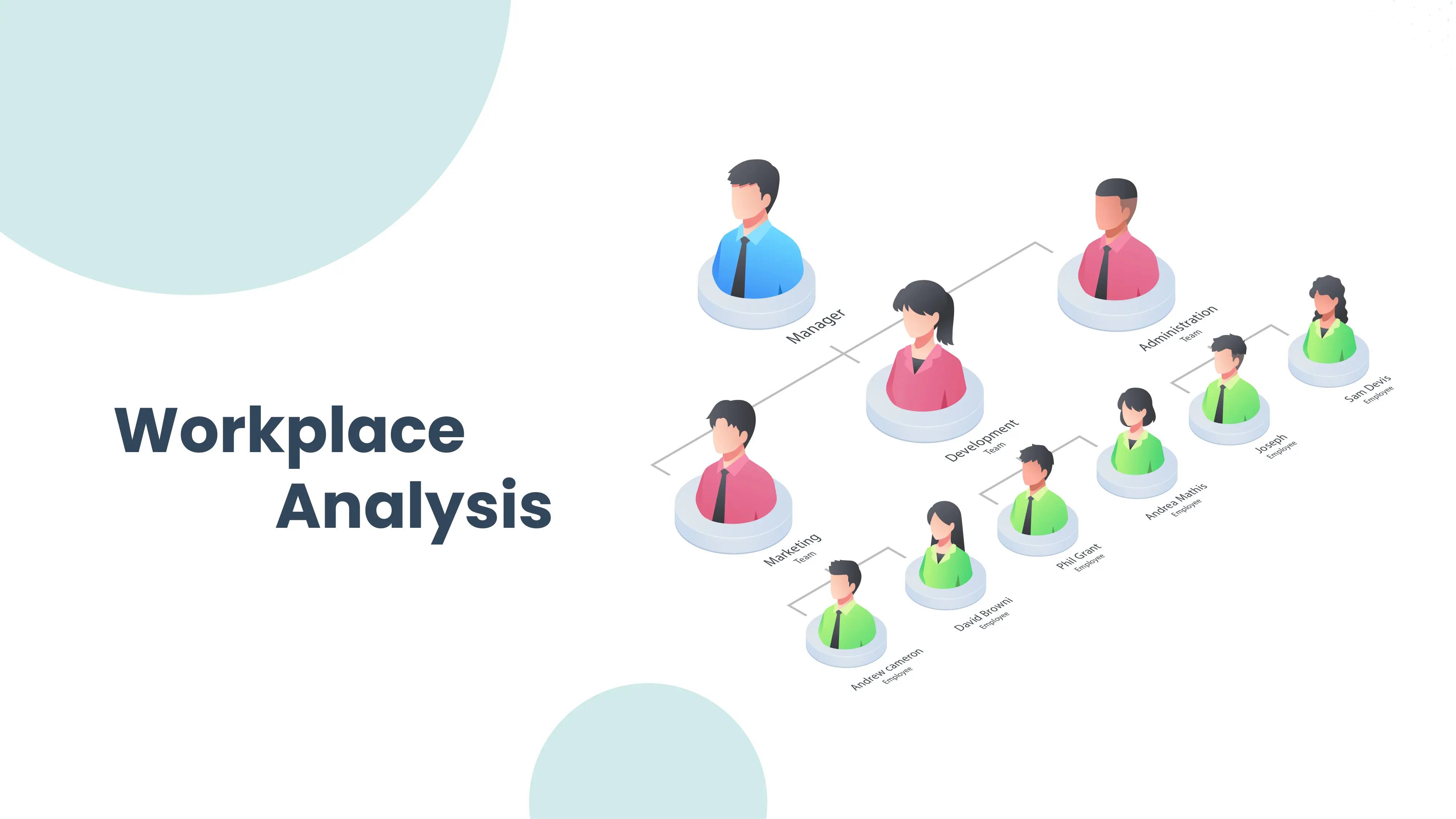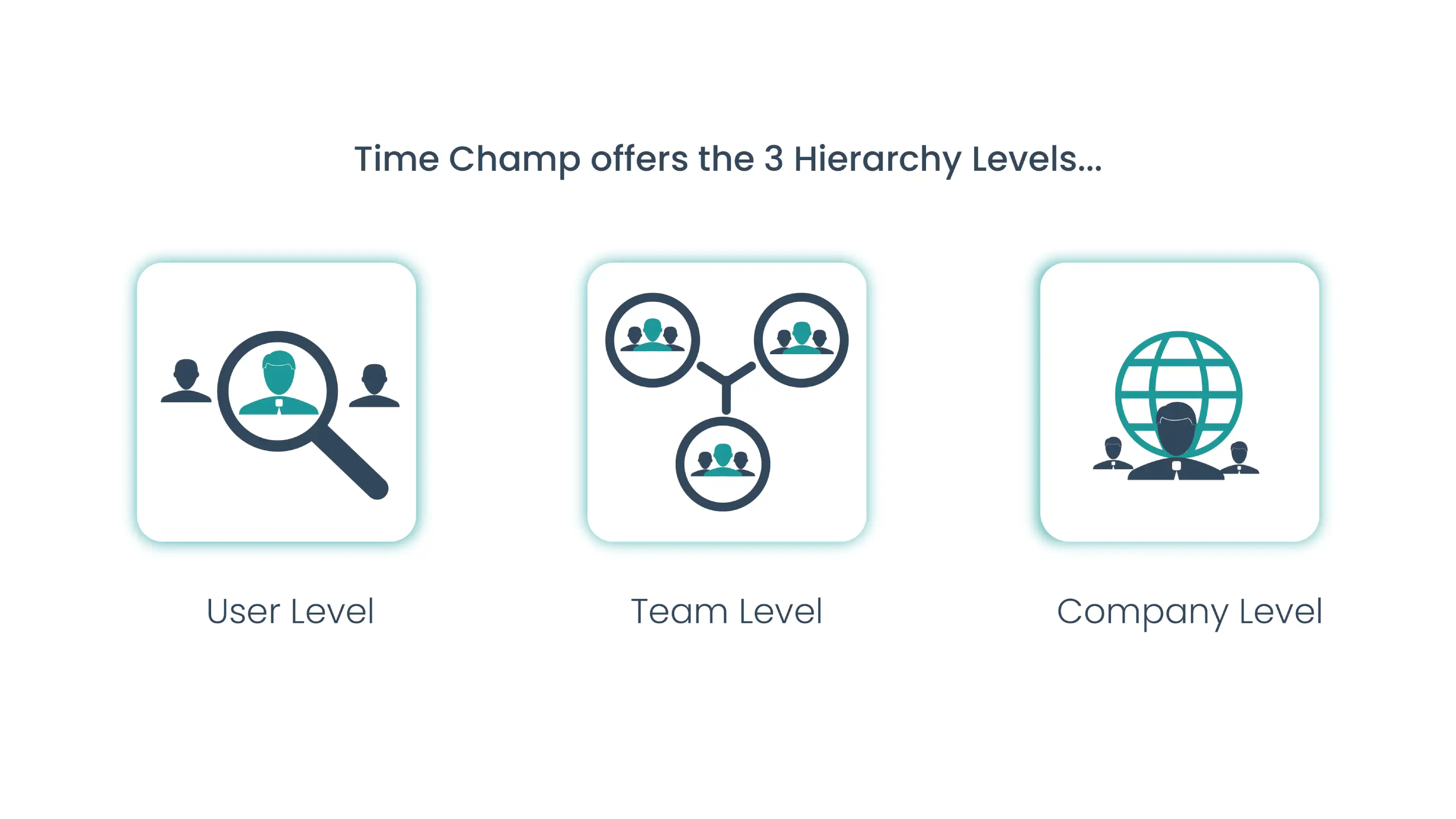
As organizations continue to compete in today's fast-paced business world, the need to optimize the workplace environment for maximum productivity and efficiency has become paramount. Workplace analysis is a powerful tool that can help organizations achieve this goal by evaluating the various aspects of the workplace and identifying areas for improvement.
Time Champ, an employee productivity monitoring software is an excellent tool that helps organizations conduct successful workplace analysis using a data-driven approach. Time Champ can provide Three levels of workplace analysis, including employee-level, team-level, and company-level analytics.
In This Blog we will discuss about the Ultimate guide for workplace analysis with Time Champ's excellent work place analytics feature. 4 Steps involved in workplace analysis are:
The first step in conducting a workplace analysis is to define your objectives and scope. What are the specific goals you want to achieve? What are the areas of the workplace you want to analyze?
Time Champ helps in defining your objectives and goals for anlysis by providing the required insights into your employee productivity and overall company performance. It also provides the information about the Key Performance Indicators (KPI's) that plays a very important role in workplace analysis. Defining these parameters upfront will help you focus your analysis and ensure you get the most useful insights.
The next step is to collect data. There are various tools and techniques available for collecting data like focus groups, observation, and tracking softwares.
Time Champ is an advanced employee productivity tracking system that always provides the most accurate data. It provides diiferent types of data such as employee attendance, activity and employee productivity reports with productive, unproductive, and idle breakdowns. Time Champ also provides task and project status reports. Gathering this information will provide you with a comprehensive view of the workplace environment and help you identify areas for improvement.
Once you have collected the data, the next step is to analyze data collected. This involves using data analysis tools to identify trends, patterns, and areas of concern. This step is critical because it will provide you with the insights needed to make informed decisions about how to improve the workplace environment.
Time Champ's Workplace Analytics feature offers 3 levels of analysis including Employee level, Team level, and Company level analysis to analyse various areas of your company.

Time Champ also offers various tools for analysis tools like intensity graphs, employee lifetime heat maps, employee activity, employee productivity reports with productive, unproductive, and idle breakdowns that are great tools for analysis.
Based on the insights gathered from the data analysis, the next step is to develop and implement recommendations. This may include changes to the work processes and procedures, communication and collaboration among employees, and the tools and technology used by employees.
Time champ is an advanced tool that can give automatic recommendations based on the employee performance indexes like employee working hours, productivity reports, time sheets. The next step is to implement Time Champ's recommendations that makes your organization more productive and efficient .
In conclusion, workplace analysis is a critical tool for optimizing the workplace environment for maximum productivity and efficiency.
Time champ is an excellent tool for conducting a successful workplace analysis using a data-driven approach. By following the steps outlined in this ultimate guide and by using Timechamp's work place analytics feature organizations can conduct a successful workplace analysis at the 3 levels including employee level, team level, and company level. By doing so, they can unlock the potential of their workforce and achieve greater success in today's competitive business world.
Also read: Time champ software offers marvelous benefits to remote employees. Get the app now and learn the process!